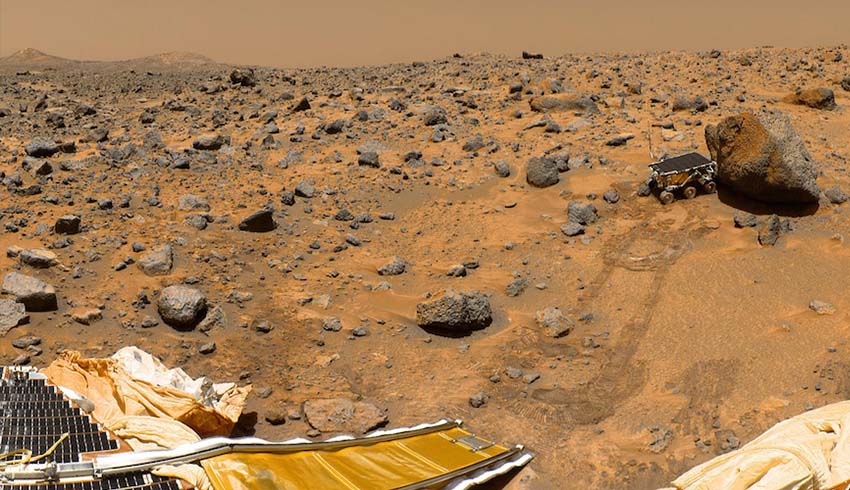
We know this because NASA has a number of satellites orbiting the Red Planet, producing vast amounts of new data, some of it giving intriguing hints about where all the water went.
Last year Mars was again enveloped by dust storms, the same events that ended the 15 years of exploration by the Mars Opportunity robotic rover.
Opportunity landed in 2004 and far exceeded its planned three-month life, its activities ending only when it was enveloped by the dust storm in June 2018.
Now two papers have been published, shedding new light on a phenomenon observed within the storm – dust towers, or concentrated clouds of dust that warm in sunlight and rise high into the air.
The NASA Jet Propulsion Laboratory (JPL), which conducts the planetary exploration program, said scientists think that dust-trapped water vapour may be riding these dust towers like an elevator to space.
The dust towers are massive, churning clouds that are denser and climb much higher than the normal background dust in the thin Martian atmosphere.
While they also occur under normal conditions, the towers appear to form in greater numbers during global storms. These reach as high as 80 kilometres and can be as big as a US state.
Recent findings on dust towers come courtesy of the NASA Mars Reconnaissance Orbiter (MRO) with the research led by JPL. The satellite’s heat-sensing Mars Climate Sounder instrument, designed specifically for measuring dust levels, can peer through the haze.
Its data, coupled with images from a camera aboard the orbiter called the Mars Context Imager (MARCI), enabled scientists to detect numerous dust towers.
"Normally the dust would fall down in a day or so," said lead author, Nicholas Heavens of Hampton University.
“But during a global storm, dust towers are renewed continuously for weeks."
In some cases, multiple towers were seen for almost a month.
That rate of dust activity surprised the scientists.
Especially intriguing was the possibility that dust towers acted as space elevators for other material, transporting them through the atmosphere.
When airborne dust heats up, it creates updrafts that carry gases along with it, including the small quantity of water vapor sometimes seen as wispy clouds on Mars.
A previous paper led by Heavens showed that during a 2007 global dust storm on Mars, water molecules were lofted into the upper atmosphere.
There, solar radiation could break them down into particles that then escaped into space.
NASA thinks that might explain how Mars lost its lakes and rivers over billions of years, becoming the freezing desert it is today.
Scientists can't say for sure what causes global dust storms as they have studied fewer than a dozen.
"Global dust storms are really unusual. we really don't have anything like this on the Earth, where the entire planet's weather changes for several months,” said Mars Climate Sounder scientist David Kass of JPL.
Receive the latest developments and updates on Australia’s space industry direct to your inbox. Subscribe today to Space Connect here.












